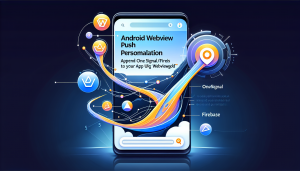
Understanding Offline-First Android Web Apps
In today’s fast-paced digital world, users expect seamless experiences from mobile applications, regardless of their internet connectivity. Offline-first web apps are designed to work smoothly even when connectivity is limited or absent by leveraging cached content and local resources. For Android developers looking to provide uninterrupted access to their web content, this approach ensures that users stay engaged with your app, whether they’re online or offline.
The Challenge: Ensuring Access When Connectivity Drops
Turning a website into an Android app is a strategic move for expanding your content’s reach and interactivity. However, a common challenge is handling scenarios where network access is unavailable. Native Android development allows for sophisticated offline storage, but what if you want to retain the flexibility and rapid deployment of a web-based solution
Enter the offline-first pattern, where local resources act as a safety net during network failures. Implementing this pattern can be tricky, especially without a native development background. That’s where tools and frameworks like WebViewGold come into play.
Introducing WebViewGold: The Quick Path from Website to App
WebViewGold provides a quick and simple route to transform any existing website into a fully functional Android app. It’s designed for those who want to save time on complex coding while still delivering a polished, professional result. A standout feature of WebViewGold is its robust offline fallback mechanism, which lets users interact with your content, even without an internet connection.
How Offline Fallback Works with WebViewGold
WebViewGold uses the power of Android’s WebView component to display your website inside a native app shell. When the device loses connectivity, instead of displaying an error page or blank screen, the app automatically loads a local




